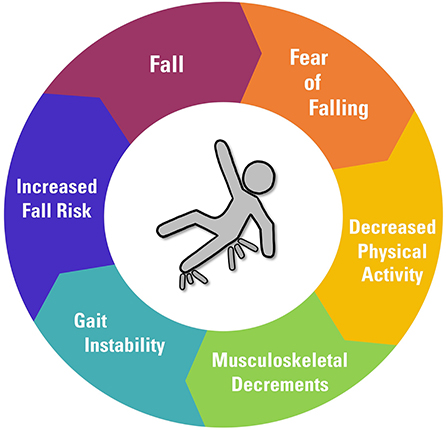All about Dementia Fall Risk
Wiki Article
All about Dementia Fall Risk
Table of ContentsSome Known Questions About Dementia Fall Risk.Dementia Fall Risk Things To Know Before You Get ThisThe 25-Second Trick For Dementia Fall Risk8 Easy Facts About Dementia Fall Risk Shown
A loss threat analysis checks to see exactly how likely it is that you will certainly drop. It is mostly done for older adults. The evaluation typically includes: This consists of a series of concerns about your general health and wellness and if you have actually had previous falls or issues with equilibrium, standing, and/or walking. These devices test your toughness, equilibrium, and stride (the means you stroll).Interventions are suggestions that may minimize your risk of falling. STEADI includes three actions: you for your risk of falling for your risk factors that can be improved to try to protect against drops (for instance, balance problems, impaired vision) to reduce your risk of falling by utilizing efficient methods (for instance, supplying education and learning and resources), you may be asked numerous inquiries consisting of: Have you fallen in the past year? Are you stressed regarding falling?
If it takes you 12 secs or even more, it may suggest you are at higher danger for a loss. This test checks toughness and equilibrium.
The placements will certainly obtain more difficult as you go. Stand with your feet side-by-side. Relocate one foot halfway ahead, so the instep is touching the big toe of your other foot. Relocate one foot totally in front of the other, so the toes are touching the heel of your various other foot.
An Unbiased View of Dementia Fall Risk
The majority of drops happen as a result of numerous contributing elements; consequently, taking care of the threat of dropping begins with determining the elements that contribute to fall risk - Dementia Fall Risk. Several of one of the most relevant risk elements include: Background of previous fallsChronic clinical conditionsAcute illnessImpaired gait and equilibrium, reduced extremity weaknessCognitive impairmentChanges in visionCertain risky medications and polypharmacyEnvironmental variables can likewise enhance the threat for falls, including: Insufficient lightingUneven or damaged flooringWet or slippery floorsMissing or harmed hand rails and grab barsDamaged or incorrectly equipped equipment, such as beds, mobility devices, or walkersImproper use assistive devicesInadequate supervision of individuals living in the NF, consisting of those that show aggressive behaviorsA successful autumn danger monitoring program calls for a detailed scientific evaluation, with input from all participants of the interdisciplinary group

The treatment plan need to also include interventions that are system-based, such as those that promote a safe setting (proper lights, hand rails, grab bars, etc). The effectiveness of the interventions should be examined occasionally, and the care strategy revised as required to reflect modifications in the fall threat assessment. Implementing a fall risk administration system utilizing evidence-based best practice can lower the prevalence of drops see this website in the NF, while limiting the possibility for fall-related injuries.
5 Simple Techniques For Dementia Fall Risk
The AGS/BGS standard advises evaluating all adults aged 65 years and older for fall risk each year. This screening includes asking people whether they have fallen 2 or even more times in the previous year or looked for clinical attention for a loss, or, if they have actually not dropped, whether they really feel unstable when walking.Individuals that have dropped when without injury should have their balance and stride assessed; those with stride or balance problems ought to obtain added evaluation. A background of 1 loss without injury and without stride or equilibrium problems does not call for further analysis past ongoing annual autumn risk testing. Dementia Fall Risk. A fall risk assessment is called for as part of the Welcome to Medicare examination

Dementia Fall Risk Things To Know Before You Buy
Recording a falls background is just one of the quality indications for loss avoidance and administration. A critical part of danger analysis is a medication testimonial. Numerous classes of medicines boost fall danger (Table 2). copyright drugs in particular are independent forecasters of drops. These medications often tend to be sedating, modify the sensorium, and impair equilibrium and stride.Postural hypotension can frequently be alleviated by lowering the dose of blood pressurelowering drugs and/or stopping medications that have orthostatic hypotension as a negative effects. Use of above-the-knee support hose and resting with the head of the bed raised might also decrease postural decreases in blood pressure. The recommended components of a fall-focused physical evaluation are displayed in Box 1.

A Pull time greater than or equal to 12 secs recommends high loss threat. Being not able to stand up from a chair of knee elevation without making use of you could try here one's arms suggests boosted fall risk.
Report this wiki page